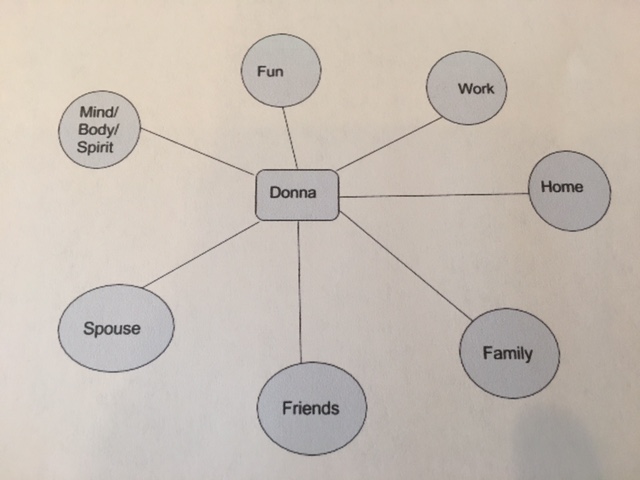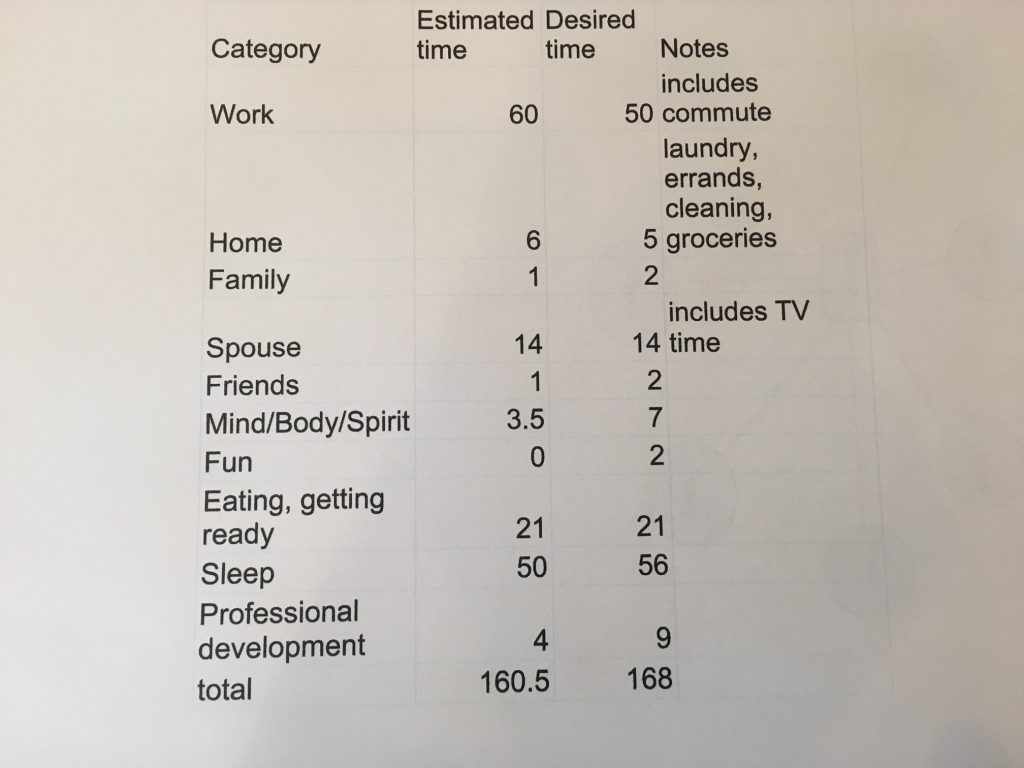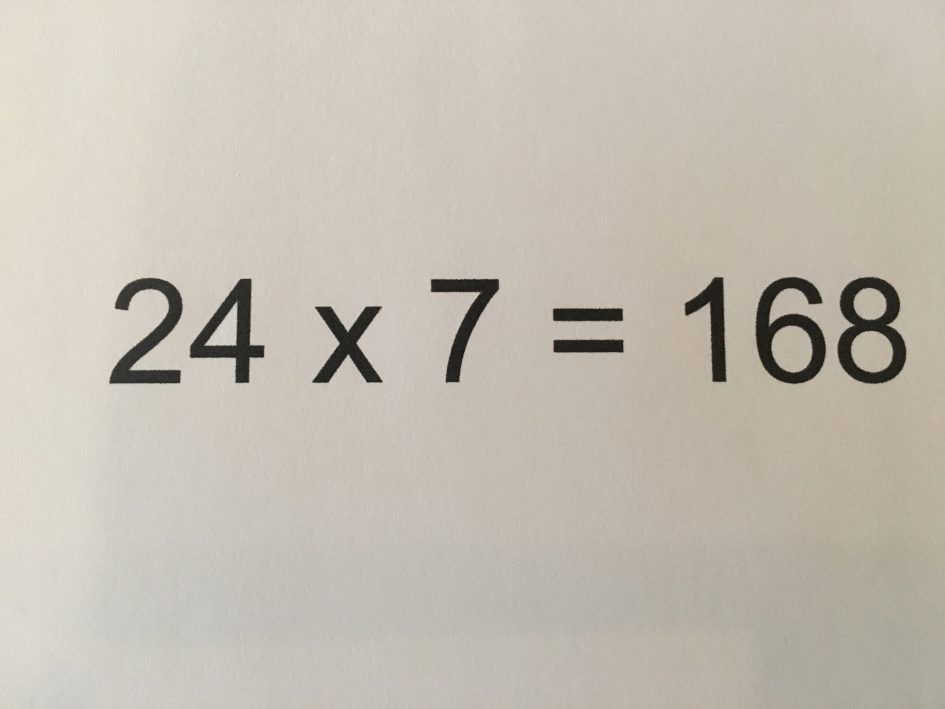“Women tend to give too much of themselves at work.” Kim Dority, Information Entrepreneur
As I travel down this path of “what’s next for Donna,” I’m intentionally reaching out to people who dared to do something I have not: be their own gig. Curiouser and curiouser. So earlier this year I reached out to Kim Dority to learn more about her business, her success, and her approach to work. Because being a career coach is one of the many hats she wears, our friendly lunch turned into a coaching session for me. Someday I’ll explore why this happens so frequently – conversations turning into coaching sessions for me – but in the meantime, I listened and learned as she talked about what she tells students in her class to prepare them for the future world of work. Two tenets she emphasizes are: 1. Don’t give your whole self at work. Save some “you” for you. And 2. Volunteer in your profession. Hmm.
Lunch Hour?
According to Dority, women are more guilty of giving their whole selves at work than men. One of her suggestions to me was to make an hour lunch sacrosanct – take that time and use it for something other than work to make forward progress on something else I want to develop or learn – be it professional reading or making a connection – take an hour for lunch every day. Since I met with Kim almost 6 months ago, I have only managed to take one whole lunch hour for something other than work while at work 2 times. That’s not a great track record. However, I have been better about actually scheduling time to eat. Baby steps. I’ve also become more aware of when I’m using up my whole self at work and when I’m saving some “me” for me. I also took the huge step of changing the scope of my job in an effort to create space to have more of “me” left at the end of the day or week. 5 months post this change, I can report it as an epic failure – not in terms of a good organizational design change – that was genius – but in terms of my attempt not to give my whole self at work. Geez. Back to the drawing board.
As part of my journey, I’ve been studying, developing and testing different approaches to time, career, and life management including using the Enneagram at work, mind mapping, horizontal timelines and 168 hour budgets. Last month I wrote about mind mapping and how to use that tool to prioritize different areas of life and work. An extension of mind mapping is to use it in conjunction with a 168 hour budget to capture where those hours go and how to be more intentional in the spending of this finite resource called time. In his book Your Brain at Work, David Rock talks about the concept of chunking. While he is referring to chunking information to make it more digestible, I think a mind map is an example of “chunking” areas of a life at a specific point in time. I’ll use myself as an example to show how it can work:


168 hour estimate
Then I look for the leaks and gaps– For example, as soon as I take my mind map and turn it into a spreadsheet, I find that that there are categories that I wouldn’t include in a map of my life that take time, like eating, doing laundry, getting ready for work or sleep. Then I also see that while I have a “work” category, I am compelled to create a separate spending category for professional development. Separating it out from my actual hours at work helps me spend it more intentionally. When I just estimate my time, as I did here, somehow there are 7.5 unaccounted for hours in my week. Where did that time go?
This exercise necessarily leads to finding and fixing budget leaks and making tradeoffs. First I get real about how I’m spending my time. One of the young women I coach actually timed herself doing different activities and added an “actual time spent” to her spreadsheet. I won’t include an example here, but it’s the same principle as writing down every dime spent in a week. Leaks become immediately obvious. For example, when I take an honest look at my chart, I know that if I really count up all my TV time, I will find a more wasted hours than I want to acknowledge. I also realize I spend more time getting ready and “running errands” than I admit to myself. Where do I capture the mindless time spent scrolling social media? Talk about a time suck.
Tradeoffs come next. From looking at my chart, it’s obvious I don’t have children at home. If I did, my Family time would increase exponentially and areas like Spouse and Sleep would likely be the areas that would take a hit. Also, this chart is kind of a typical week. If I planned more time with family, friends or for entertainment, I’d make tradeoffs in areas like professional development or take time off work.

Donna’s 168 hour budget
This accounting helps me see some areas where I can be intentional about tradeoffs to have more fun, spend more time with friends, or get more sleep. I have been practicing spending less time getting ready by making a conscious effort to care less about my total ensemble. I read that Barak Obama only wore blue or gray suits. While his stated objective was to cut down on the number of decisions he had to make in a day, it would be a real time saver too. It’s easy to see that I could watch less TV but maybe less obvious that I could find time in my week if I moved closer to work to reduce my commute. And while I could spend less time at work, I could also change how I spend my time by having a different kind of job. Volunteering in my profession looks like it’s absent in this list. At this point in time, I am including that facet in my Professional Development line. Doing this 168 hour budget exercise helps me see that making Volunteering its own line will increase my intentionality in this area.
The effectiveness of pairing a mind mapping exercise with a 168 hour budget is enhanced further when combined with creating a 3-5 year horizontal timeline. I’ll save that topic for another time since I’ve completely spent my weekly Professional Development and Fun budget on writing this post!
It’s good for me to remember that some things in life are always in abundance: love, gratitude, praise, even money and good work when I have a healthy mindset. But one thing I can’t do is bend time. So taking a closer look at how I spend my 168 hours a week so I don’t give my whole self at work helps remind me that time flies. How I spend it is up to me.
Recommended Reading:
Your Brain at Work: strategies for overcoming distraction, regaining focus and working smarter all day long/David Rock (2009).
Thanks to Amber Cox for recommending this book. I enjoy reading pop psychology about decision-making and how the brain works. This is an accessible read with helpful examples about leveraging how various parts of the brain function to improve effectiveness at work. He uses an extended metaphor using the stage, actors and audience to make his point. I admit that despite dabbling in theater in high school, it still took my brain awhile to warm up to this metaphor.

September 19, 2017 at 9:11 am
Hi Donna,
Thanks for the mind mapping post and in this post sharing your time mapping tool. Just like we all gain from reading about effective physical exercises with visuals, I found your post with the graphic of your time allocation for various things a very valuable tool to incorporate for self-preservation. In this day and time when juggling multiple things has become the norm, it is very important to be highly cognizant if our time allocation matches with things that take importance in our lives and you showed that so well by sharing your personal experiences. It is beneficial to do this kind of time allocation assessment on a regular basis so allocations can be changed and adapted to the focus shifts at different points in our lives. I approach time allocation from a different angle. I look at things I do daily and weekly like commuting, my job, exercising, my time with my husband, my friends, family and “me” time and see if they have the self-growth and self-preservation concepts I value – like, learning, fun, information sharing, knowledge sharing, being motivated, rejuvenated etc. As I strive to infuse these concepts in everything I do, I feel less guilty if I spend time watching HGTV shows, or reading magazines on fashion, or tending to work emails at home or decide to take a longer walk with my husband than clean house.
October 7, 2017 at 3:17 pm
Thanks for sharing your wisdom and experience, Padma. Your advice helped me enjoy binge-watching a funny show without guilt. It lifted my mood, which was a great way to spend my time!